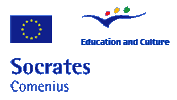 |
|||||||||||||||||||||||||||
|
|
||||||||||||||||||||||||||
The changing views about the Nature of Science (NOS) and science teachers’ professional development
|
|||
Science education is not a static field but a dynamic one. It changes in direct relation to the developments in the society which it serves. The most important issue that led to the change of the direction in science education is the gradual change of our views that concern the NOS (Kokkotas, 2003). It is argued that a contemporary accepted view about this issue is that “science is dynamic, changing and tentative. Science is not a static collection of facts. We can not take current scientific knowledge to be complete and final” (Bell, Lederman, and Abd-El-Khalick, 2000). Lemke (2001) supports that “Historians, sociologists, and cultural anthropologists came increasingly to see that science had to be understood as a very human activity whose focus of interest and theoretical dispositions in any historical period were, and are, a part of the dominant cultural and political issues of the day”. Teaching the nature of science in schools and training teachers about it, has attracted the attention of the science education research community (Hodson, 1988; Matthews, 1998; McComas, Clough, & Almazroa, 1998; Abd-El-Khalick & Lederman, 2000; Driver, Leach, Millar, & Scott, 1996; Jenkins, 1996). Studies have shown that high school science students and in-service teachers’ views of the Nature of Science are not consistent with current accepted definitions of the nature of science (Lederman, 1992; Ryan & Aikenhead, 1992; Driver et al., 1996; Leach et al., 2000; Lederman, Wade, and Bell, 1998). We made a research in order to investigate science teachers' views about the nature of science, the nature of learning, the nature of teaching, and about critical issues that concern the falling bodies. Although the sampling among the participating countries and the groups of different professional status does not allow us to generalize our conclusions, few points are apparent and firm.
The result of our study was in accordance with other studies that have shown that high school science students and in-service teachers’ views of the Nature of Science are not consistent with current accepted definitions of the nature of science. “The most teachers and students believe that all scientific investigations adhere to an identical set and sequence of steps known as the scientific method (McComas, 1996), and does not recognize the fact that scientists’ disciplinary training and commitments, as well as their personal experiences, preferences, and philosophical assumptions do influence their work (Akerson, Abd-El-Khalick, & Lederman, 2000)” (in Bartholomew, Osborne & Ratcliffe, 2004). In conclusion, the research has demonstrated teachers’ need for better understandings of the nature of science, and has emphasized the critical role that teachers play in developing these understandings. Research is pointing to the effectiveness of explicit instruction in teacher education and the exploitation of authentic historical science events to present the social and cultural nature of science. |
|||
